Related Research Articles
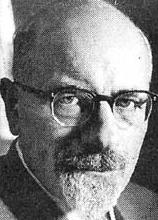
Isaac Deutscher was a Polish Marxist writer, journalist and political activist who moved to the United Kingdom before the outbreak of World War II. He is best known as a biographer of Leon Trotsky and Joseph Stalin and as a commentator on Soviet affairs. His three-volume biography of Trotsky was highly influential among the British New Left in the 1960s and 1970s.

The Forward, formerly known as The Jewish Daily Forward, is an American news media organization for a Jewish American audience. Founded in 1897 as a Yiddish-language daily socialist newspaper, The New York Times reported that Seth Lipsky "started an English-language offshoot of the Yiddish-language newspaper" as a weekly newspaper in 1990.
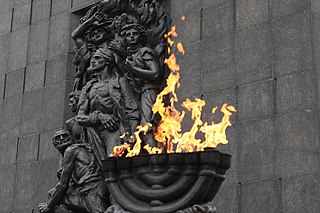
The history of the Jews in Poland dates back at least 1,000 years. For centuries, Poland was home to the largest and most significant Ashkenazi Jewish community in the world. Poland was a principal center of Jewish culture, because of the long period of statutory religious tolerance and social autonomy which ended after the Partitions of Poland in the 18th century. During World War II there was a nearly complete genocidal destruction of the Polish Jewish community by Nazi Germany and its collaborators of various nationalities, during the German occupation of Poland between 1939 and 1945, called the Holocaust. Since the fall of communism in Poland, there has been a renewed interest in Jewish culture, featuring an annual Jewish Culture Festival, new study programs at Polish secondary schools and universities, and the opening of Warsaw's Museum of the History of Polish Jews.
Following the establishment of the Second Polish Republic after World War I and during the interwar period, the number of Jews in the country grew rapidly. According to the Polish national census of 1921, there were 2,845,364 Jews living in the Second Polish Republic; by late 1938 that number had grown by over 16 percent, to approximately 3,310,000, mainly through migration from Ukraine and the Soviet Russia. The average rate of permanent settlement was about 30,000 per annum. At the same time, every year around 100,000 Jews were passing through Poland in unofficial emigration overseas. Between the end of the Polish–Soviet War of 1919 and late 1938, the Jewish population of the Republic grew by nearly half a million, or over 464,000 persons. Jews preferred to live in the relatively-tolerant Poland rather than in the Soviet Union and continued to integrate, marry into Polish Gentile families, to bring them into their community through marriage, feel Polish and form an important part of Polish society. Between 1933 and 1938, around 25,000 German Jews fled Nazi Germany to sanctuary in Poland.
The Folkspartei was founded after the 1905 pogroms in the Russian Empire by Simon Dubnow and Israel Efrojkin. The party took part in several elections in Poland and Lithuania in the 1920s and 1930s and did not survive the Holocaust.
Żydokomuna is an anti-communist and antisemitic canard, or a pejorative stereotype, suggesting that most Jews collaborated with the Soviet Union in importing communism into Poland, or that there was an exclusively Jewish conspiracy to do so. A Polish language term for "Jewish Bolshevism", or more literally "Jewish communism", Żydokomuna is related to the "Jewish world conspiracy" myth.

Aleksander Wat was the pen name of Aleksander Chwat, a Polish poet, writer, art theoretician, memorist, and one of the precursors of the Polish futurism movement in the early 1920s, considered to be one of the more important Polish writers of the mid 20th century. In 1959, he emigrated to France and in 1963 relocated to the United States, where he worked at the Center for Slavic and East European Studies of the University of California, Berkeley.

Located in the Poznań province west of Łódź, Kalisz was for centuries a border town between Poland and Germany. The oldest city in Poland, Kalisz also played a pivotal role in Polish Jewish history: in 1264, Bolesław I the Pious, ruler of the western part of Poland (Wielkopolska), was the first to grant a charter to the local Jewish community, giving them settlement rights, legal protection, and certain religious and financial freedoms. This "Statute of Kalisz" was extended to the whole country by King Casimir the Great and expanded by later Polish rulers. It provided the legal foundation for Jewish rights in Poland.

The "Bund" in Latvia was a Jewish socialist party in Latvia between the two World Wars, adhering to the political line of the General Jewish Labour Bund.
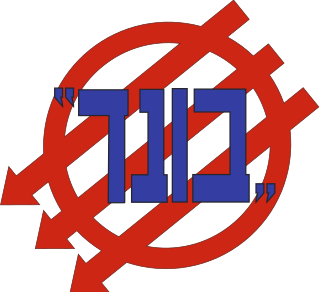
The General Jewish Labour Bund in Poland was a Jewish socialist party in Poland which promoted the political, cultural and social autonomy of Jewish workers, sought to combat antisemitism and was generally opposed to Zionism.
During the nine decades since its establishment in 1919, the Communist Party USA produced or inspired a vast array of newspapers and magazines in at least 25 different languages. This list of the Non-English press of the Communist Party USA provides basic information on each title, along with links to pages dealing with specific publications in greater depth.

The Central Committee of Polish Jews also referred to as the Central Committee of Jews in Poland and abbreviated CKŻP, was a state-sponsored political representation of Jews in Poland at the end of World War II. It was established on 12 November 1944, as the successor of the Provisional Central Committee of Polish Jews formed a month earlier under the umbrella of the communist Polish Committee of National Liberation (PKWN). The CKŻP provided care and assistance to Jews who survived the Holocaust. It legally represented all CKŻP-registered Polish Jews in their dealings with the new government and its agencies. It existed until 1950 when, together with the Jewish Cultural Society, representatives of CKŻP founded the Socio-Cultural Association of Jews in Poland.

The International Jewish Labor Bund was a New York-based international Jewish socialist organization, based on the legacy of the General Jewish Labour Bund founded in the Russian empire in 1897 and the Polish Bund that was active in the interwar years. The IJLB is composed by local Bundist groups around the world. It was an "associated organisation" of the Socialist International, similar in status to the World Labour Zionist Movement or the International League of Religious Socialists. The World Coordinating Council/Committee of the Jewish Labor Bund was dissolved in New York in the mid-2000s. although local Bundist groups or groups inspired by the Jewish Labor Bund still exist in France, the UK, and most notably Australia.

Bundism is a secular Jewish socialist movement whose first organizational manifestation was the General Jewish Labour Bund in Lithuania, Belarus, Poland, and Russia, founded in the Russian Empire in 1897.

The General Jewish Labour Bund in Lithuania, Poland and Russia, generally called The Bund or the Jewish Labour Bund, was a secular Jewish socialist party initially formed in the Russian Empire and active between 1897 and 1920. In 1917 the Bund organizations in Poland seceded from the Russian Bund and created a new Polish General Jewish Labour Bund which continued to operate in Poland in the years between the two world wars. The majority faction of the Russian Bund was dissolved in 1921 and incorporated into the Communist Party. Other remnants of the Bund endured in various countries. A member of the Bund was called a Bundist.
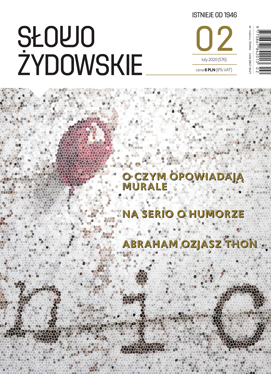
The Jewish Word is a bilingual periodical magazine published monthly in Polish and Yiddish. Founded in 1992, it is currently the primary Jewish publication in Poland.

Gershom Bader was a Jewish Galician-American writer, journalist, and playwright who wrote in Hebrew and Yiddish.
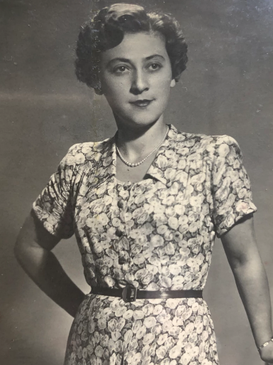
Ruth Baum was a Jewish Polish-Israeli writer and journalist.

The Jewish Labour Bund, more commonly known as the Jewish Labour Bund Melbourne, the Australian Bund, or simply the Bund, is the Australian wing of the Bundist movement. It was a member of the historical International Jewish Labor Bund, and is the largest and most active Bundist organisation left in the world. It was founded in 1928 Jewish Polish immigrants, and expanded rapidly after the Second World War with the mass arrival of Holocaust survivors to Australia. The Bund is currently registered only in the state of Victoria, where it is legally known as the Jewish Labour Bund, Inc., and is based primarily in the city of Melbourne.

S.L. Shneiderman was a prominent Polish-American Jewish writer, journalist, translator and poet, who wrote in Yiddish and English.
References
- ↑ Minczeles, Henri. Histoire générale du Bund: un mouvement révolutionnaire juif. Paris: Editions Austral, 1995. p. 427
- ↑ Shapiro, Leon (1953). "Poland" (PDF). American Jewish Yearbook: 336–343. Archived from the original (PDF) on 29 February 2012. Retrieved 9 November 2009.
- ↑ Bugajski, Janusz (2002). Political parties of Eastern Europe: a guide to politics in the post-Communist era. M.E. Sharpe. p. 1055. ISBN 978-1-56324-676-0 . Retrieved 9 November 2009.